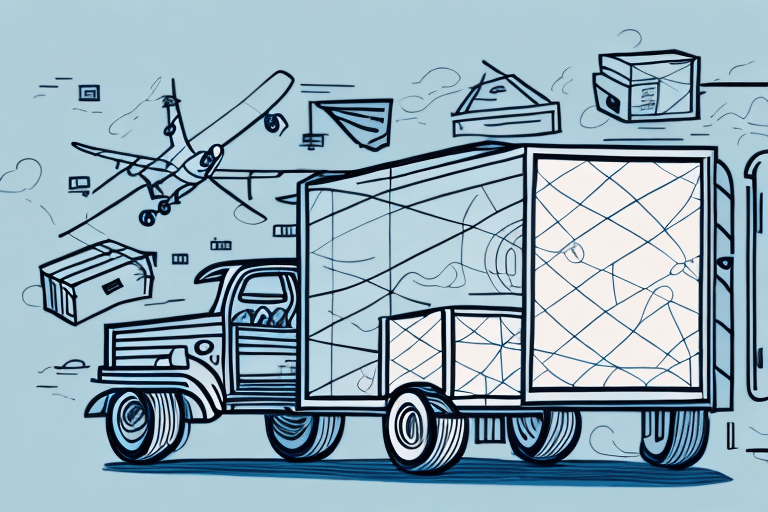Benefits of Ground Delivery
Ground delivery offers numerous advantages that make it a preferred shipping method for many businesses and individuals:
Cost-Effectiveness
Ground delivery is generally more affordable compared to air or sea shipping. This cost efficiency makes it an ideal choice for small businesses or individuals shipping smaller packages. According to the U.S. Department of Transportation, ground shipping can reduce shipping costs by up to 50% compared to air freight.
Environmental Impact
Ground transportation produces fewer emissions per mile compared to air transport, making it a more eco-friendly option. The use of fuel-efficient vehicles and optimized routing can further reduce the carbon footprint of ground delivery operations. Studies from the Environmental Protection Agency highlight the benefits of reducing carbon emissions through improved ground shipping practices.
Flexibility for Small Businesses
Ground delivery provides small businesses with the flexibility to ship a variety of package sizes and weights without the strict restrictions often imposed by air or sea shipping. This adaptability allows businesses to manage their inventory and logistics more effectively, enhancing their competitiveness in the market.
Ground Delivery vs. Other Shipping Methods
Understanding the differences between ground delivery and other shipping methods is crucial for selecting the best option for your needs:
Timeframe and Speed
While air shipping can deliver packages within hours, ground delivery typically takes several days, depending on the distance and destination. However, ground delivery schedules are often more predictable, allowing for better planning and inventory management.
Cost Comparison
Ground shipping is usually less expensive than air or sea freight. According to Inbound Logistics, businesses can save significantly on shipping costs by choosing ground delivery for domestic shipments.
Package Size and Weight
Ground delivery can accommodate larger and heavier packages compared to air and sea shipping, which often have stricter size and weight limits. This makes ground delivery a better option for transporting bulky or heavy items.
Understanding Ground Delivery Costs
The cost of ground delivery depends on various factors that businesses and individuals should consider:
Factors Influencing Costs
- Distance: The longer the distance, the higher the shipping cost.
- Package Size and Weight: Heavier and larger packages cost more to ship.
- Delivery Speed: Faster delivery options typically come at a premium.
- Carrier Rates: Different carriers have varying pricing structures based on their services and operational costs.
Tips for Saving on Shipping Costs
- Compare rates from multiple carriers to find the best deal.
- Consolidate shipments to take advantage of bulk discounts.
- Optimize your packaging to reduce size and weight.
- Utilize loyalty programs or negotiate contracts for better rates.
Ground Delivery Process and Best Practices
Following best practices in ground delivery ensures that shipments are handled efficiently and arrive safely:
Packaging and Labeling
Proper packaging protects your shipment during transit. Use materials like bubble wrap, packing peanuts, or sturdy cardboard to secure your items. Accurate and legible labeling ensures that packages reach the correct destination without delays.
Risk Minimization
To minimize risks such as damage or loss, choose reliable carriers, use tracking services, and provide clear delivery instructions. Insuring valuable shipments can also offer additional protection.
Preparing for Oversized Packages
When shipping oversized items, coordinate with carriers to ensure they have the capacity to handle large packages. Secure packaging and clear labeling are essential to prevent damage and ensure timely delivery.
Choosing the Right Ground Delivery Carrier
Selecting the appropriate carrier is critical for efficient ground shipping:
Carrier Reputation and Reliability
Research carriers' reputations by reading reviews and checking their track records for on-time deliveries and customer service. Reliable carriers reduce the risk of delays and lost packages.
Commercial vs. Residential Shipping
Commercial ground shipping typically handles larger, bulkier packages intended for businesses, while residential shipping focuses on smaller, frequent shipments to individual households. Choose a carrier that specializes in the type of shipping you require.
Technology and Future Trends in Ground Delivery
Advancements in technology are transforming ground delivery, making it more efficient and reliable:
Role of Technology Today
Real-time tracking systems provide visibility into shipment locations, improving overall supply chain management. Automation in sorting and logistics centers enhances speed and accuracy.
Future Innovations
Emerging technologies like drones and autonomous vehicles are set to revolutionize ground delivery by reducing delivery times and operational costs. Additionally, artificial intelligence and big data analytics will further optimize routing and resource allocation.
Challenges in Ground Delivery and Solutions
Ground shipping comes with its set of challenges, but there are effective strategies to overcome them:
Common Challenges
- Weather Delays: Extreme weather conditions can disrupt delivery schedules.
- Traffic and Navigation Issues: Congestion and complex routes can lead to delays.
- Driver Shortages: A lack of available drivers can affect delivery capacity.
- Package Loss or Damage: Mishandling during transit can result in lost or damaged goods.
Overcoming Challenges
- Choose carriers with robust contingency plans for weather and traffic disruptions.
- Utilize advanced routing software to optimize delivery routes.
- Invest in quality packaging to protect shipments from damage.
- Implement comprehensive tracking systems to monitor shipments in real-time.
Case Studies and Industry Applications
Ground delivery plays a vital role in various industries, showcasing its versatility and effectiveness:
E-Commerce and Retail
Companies like Amazon and Walmart rely heavily on ground delivery to provide fast and cost-effective shipping options to their customers, enhancing customer satisfaction and loyalty.
Healthcare
Ground transportation is essential for delivering critical medical supplies, equipment, and specimens between hospitals and clinics, ensuring timely and safe medical operations.
Manufacturing
Manufacturers use ground delivery to transport raw materials and finished products across regions, facilitating smooth production cycles and distribution.
Additional Tips for Ground Delivery
Tracking Your Shipment
Monitoring your shipment's progress provides peace of mind and allows you to address any issues promptly. Most carriers offer real-time tracking services, enabling you to stay informed about your package's status.
Preparing Ground Transportation for Oversized Packages
Ensure that oversized packages are properly secured and labeled. Coordinate with carriers in advance to arrange for specialized handling and transportation needs.
Conclusion
Ground delivery remains a cornerstone of the shipping industry, offering cost-effective, flexible, and environmentally friendly shipping solutions. By understanding its benefits, challenges, and best practices, businesses and individuals can optimize their shipping strategies to achieve efficient and reliable deliveries.






















